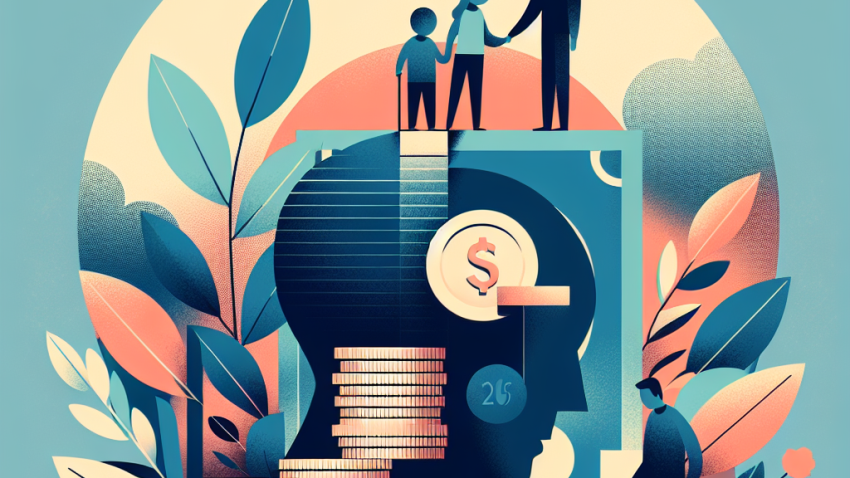
The Real Cost of Living Crisis: A Look into UK Debt Advice Services and Their Limits
The Fine Print That Fines You: How Hidden Fees Drain Consumer Wallets—and What You Can Do About It
Let’s face it—nobody reads the fine print unless they’re already in trouble. But in the world of consumer finance, what you don’t read can cost you. Literally.
Hi, I’m Eleanor “Ellie” Cartwright. If you’ve ever been ambushed by a $35 overdraft fee or scratched your head wondering why your “no annual fee” credit card suddenly cost you $99, congrats—you’ve officially experienced the murky magic of hidden fees. These elusive charges, often buried in clauses smaller than a fruit fly’s sneeze, are everywhere. They’re in your bank account, your phone bill, your airline ticket, and yes, even that seemingly harmless online subscription.
Today we’re breaking down how hidden fees are draining Americans’ wallets, the systemic issues that perpetuate them, and most importantly: what you can actually do about it.
What Exactly Are Hidden Fees?
Hidden fees, sometimes referred to as “junk fees,” are additional charges that are not clearly disclosed upfront. They’re usually:
- Buried in the Terms & Conditions — Not missed, just camouflaged with legalese.
- Tacked onto services — Think “service fee,” “processing fee,” or more nebulous terms like “regulatory cost recovery surcharge.”
- Not optional — You don’t get to decline them unless you want to decline the service entirely.
These fees are legal (unfortunately) but often unethical in how they’re presented—or hidden. When companies fail to fully disclose the full cost of a service up front, consumers have little recourse aside from canceling after the fact, a luxury not everyone can afford.
Where Are Hidden Fees Hiding?
You might think you’ve got your personal finances under control, but here’s where hidden fees love to lurk:
1. Banking and Credit Cards
Banks are masters at introducing new fees under the guise of “modernizing our offerings.”
- Overdraft fees
- ATM fees (yes, even if you’re just checking your balance—looking costs extra!)
- Maintenance fees
- Foreign transaction fees
Ironically, these hurt low-income consumers the most—those who are least able to afford them. It’s death by a thousand micro-transactions.
2. Telecommunications
Your phone bill is a goldmine of mysterious charges. Ever seen line items like “Federal Universal Service Fee” or “Administrative Fee”? Yeah, me neither—until I started asking questions.
3. Travel and Airlines
Here’s the deal: buying a flight is no longer just buying a flight. Now, you’re looking at:
- Seat selection fees
- Carry-on luggage fees (*how DARE you bring a bag*)
- Fuel surcharge
- Early boarding fees
By the time you’re seated on the plane, you’ve been nickeled and dimed into oblivion—and you’re not even in business class.
4. Subscription Services
Free trial? Sure. But did you calendar the cancellation date? Many streaming and subscription software platforms auto-enroll you into paid tiers with deceptive upsell tactics.
Why Hidden Fees Are Allowed to Exist
This is where my consumer advocacy flag goes up. Hidden fees persist for three key reasons:
- Lack of regulation — Federal oversight is fragmented, often leaving companies to “self-regulate” (spoiler: they don’t).
- Consumer fatigue — We’re overwhelmed by the sheer number of disclosures, terms, and pop-ups. It’s engineered exhaustion.
- Profit incentives — These fees generate billions annually. Surprise surprise—companies are hesitant to give that up.
But the tide is turning. The Consumer Financial Protection Bureau (CFPB) has started cracking down on junk fees, and President Biden’s administration has publicly taken a stance against anti-competitive pricing practices.
So What Can You Actually Do?
Glad you asked. Empowering consumers is why I do what I do. Here’s how to guard against hidden fees:
1. Read the Fine Print (or at least skim intelligently)
Yes, it’s tedious. But search for red-flag terms like “subject to change,” “processing fee,” and “additional charges apply.” If you see vagueness, assume there’s a fee hiding behind it.
2. Demand Full Transparency
Call companies and ask for a total cost breakdown. If they can’t—or won’t—provide it, that’s a clue and a half.
3. Use Consumer Advocacy Tools
Use price comparison websites that include all fees. Read user reviews and join forums. There’s comfort—and power—in collective watchdogging.
4. Contact the CFPB
If you feel you’ve been misled about fees, file a complaint at the CFPB complaint center. These reports inform regulatory crackdowns.
5. Vote With Your Dollars
Cancel services that sneak in fees. Support companies that clearly disclose pricing. Transparency should be rewarded, not penalized.
The Bigger Picture: Policy Reform Must Follow
It’s not enough to expect consumers to just be more diligent. Hidden fees are a systemic issue and require systemic intervention. Fortunately, legislation is in motion. For example:
- The Junk Fee Prevention Act, introduced in the U.S. Congress, aims to eliminate common predatory charges.
- State-level bills in California, New York, and Illinois are pushing for consumer protection transparency laws.
But pressure from public opinion—your voice—is essential to moving the needle.
Final Thoughts: Your Pocketbook Deserves Protection
Each time a company sneakily tacks a charge onto your bill, it chips away at your financial agency. Hidden fees aren’t just annoying—they’re predatory. And they disproportionately affect the very people who can least afford them.
So let’s flip the script, shall we? Become the informed consumer. Raise your expectations. Spread the word. And if you’re ever left staring at a confusing charge with steam billowing from your ears—you know where to find me.
For more resources on consumer rights and policy reform, visit our About Us page or Contact Us for direct support.
Because your money should fund your future—not pad hidden profits.









Leave a Reply